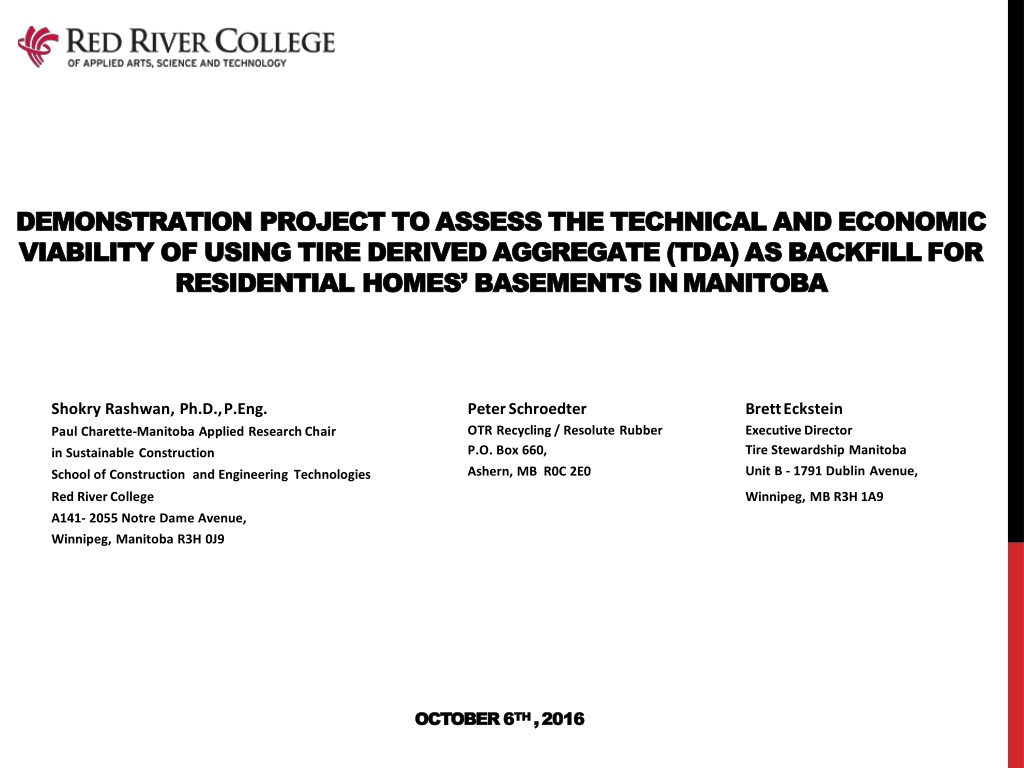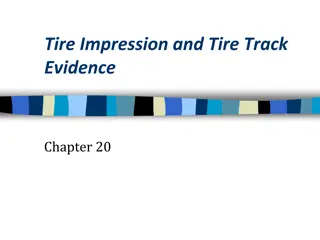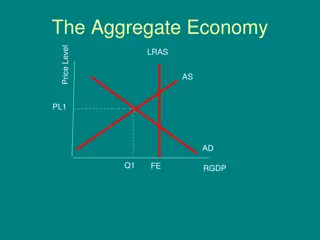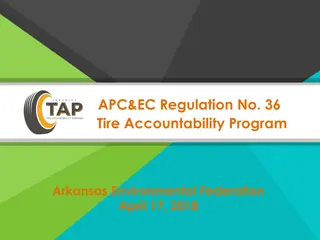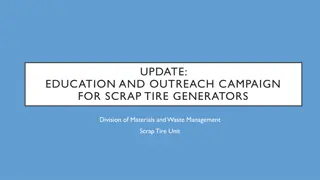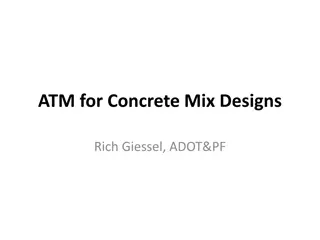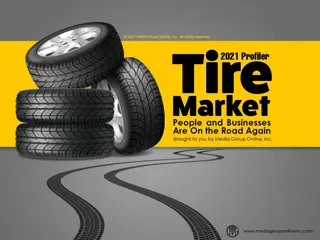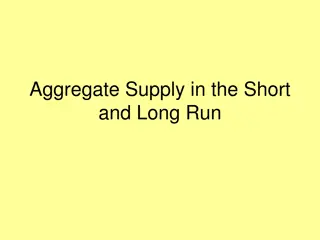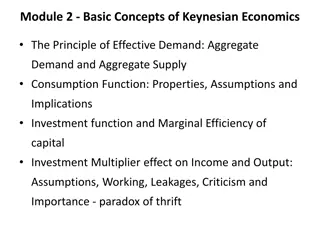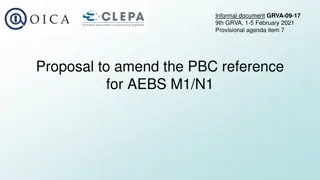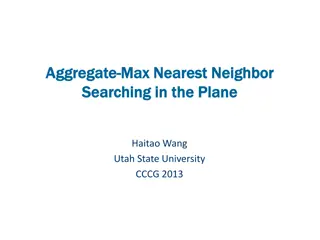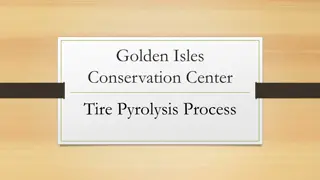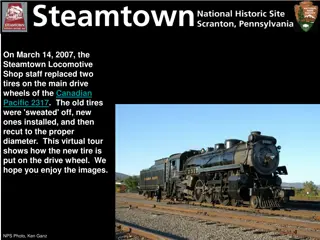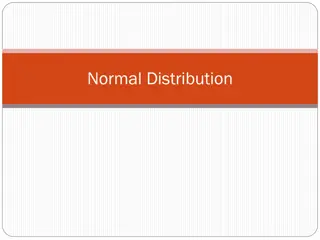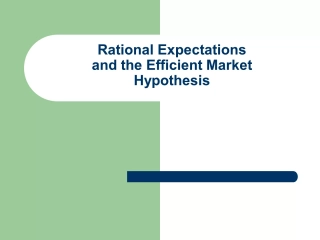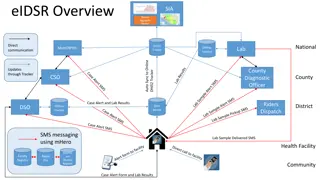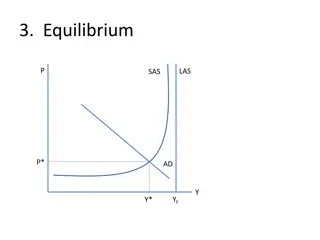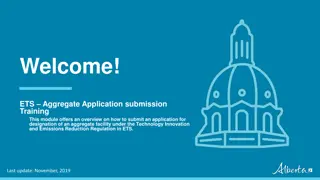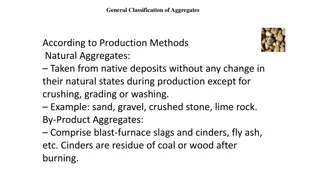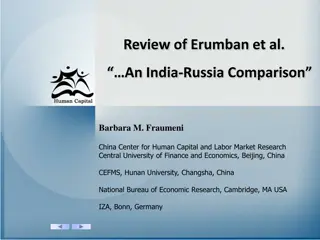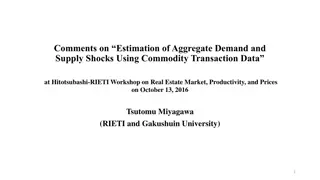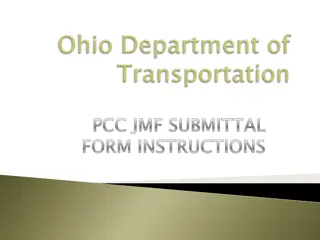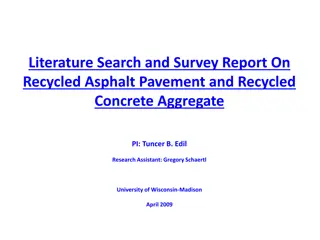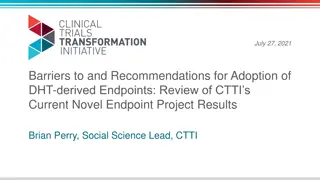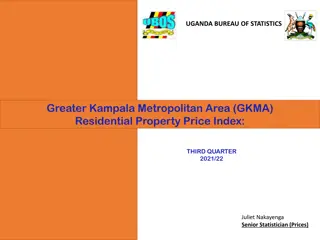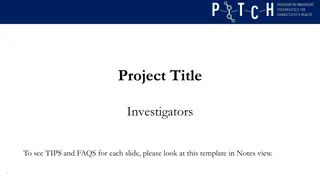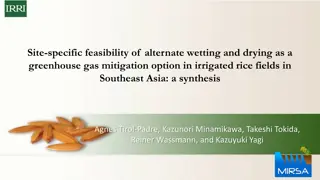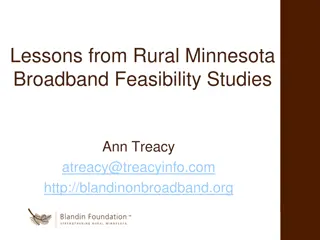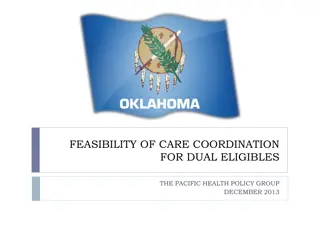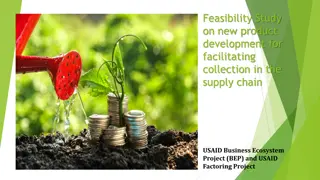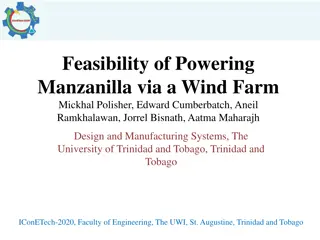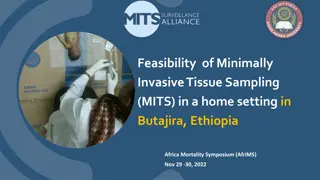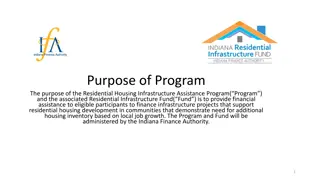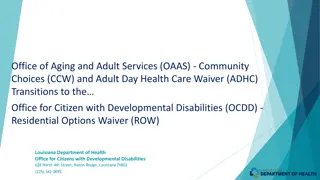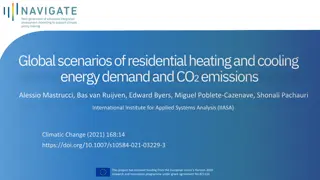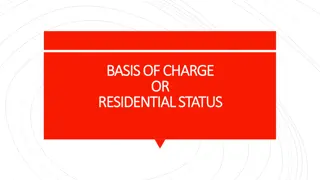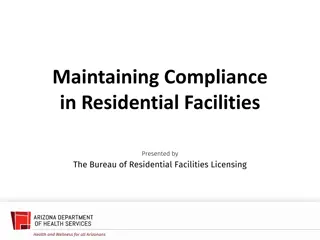Feasibility of Utilizing Tire-Derived Aggregate in Residential Basements
Conducted by Red River College in collaboration with Tire Stewardship Manitoba, this project explores the use of Tire-Derived Aggregate (TDA) sourced from recycled tires as backfill material for residential basements in Manitoba. The research focuses on investigating the compressibility, gradation distribution, and hydraulic conductivity of TDA in different phases, aiming to assess its viability for sustainable construction practices.
Download Presentation

Please find below an Image/Link to download the presentation.
The content on the website is provided AS IS for your information and personal use only. It may not be sold, licensed, or shared on other websites without obtaining consent from the author. Download presentation by click this link. If you encounter any issues during the download, it is possible that the publisher has removed the file from their server.
E N D
Presentation Transcript
DEMONSTRATION DEMONSTRATION PROJECT VIABILITY VIABILITY OF OF USING RESIDENTIAL RESIDENTIAL HOMES PROJECT TO USING TIRE TIRE DERIVED TO ASSESS ASSESS THE DERIVED AGGREGATE AGGREGATE (TDA) HOMES BASEMENTS BASEMENTS IN THE TECHNICAL TECHNICAL AND (TDA) AS IN MANITOBA MANITOBA AND ECONOMIC ECONOMIC AS BACKFILL BACKFILL FOR FOR Shokry Rashwan, Ph.D.,P.Eng. Paul Charette-Manitoba Applied Research Chair PeterSchroedter OTR Recycling / Resolute Rubber P.O. Box 660, BrettEckstein ExecutiveDirector Tire Stewardship Manitoba Unit B - 1791 Dublin Avenue, in Sustainable Construction Ashern, MB R0C 2E0 School of Construction and Engineering Technologies Red RiverCollege Winnipeg, MB R3H 1A9 A141- 2055 Notre Dame Avenue, Winnipeg, Manitoba R3H 0J9 OCTOBER OCTOBER 6 6TH TH , ,2016 2016
Presentation Content 1. Background & Project Phases 2. Summary Results of Phases I &II 3. Up to Date Results of Phase III 4. Next Step 5. Conclusions
Background since May 2013 the research team at Red River College (RRC) has been working with the Tire Stewardship Manitoba (TSM), OTR Corp and Manitoba Hydro on a research project to explore a new application for recycled tires known as Off-The-Road Tire Derived Aggregate (TDA) Project was divided into three phases; Phases I & II focusing on short-term and Phase III focusing on long-term properties of the material The following is a summary of the experimental work conducted in Phases I&II
Summary of Results for Phases I & II First: Compressibility Compacted 2 , 4 or 6 layer of TDA would compress 15% to 20% under DL (2.4 kPa) Additional 5% compression may result from applying LL of up to 4.8 kPa Permanent deformation after removing all loads is 5% to 10% of original layer thickness
Summary of Results for Phases I & II Second: Gradation Distribution Gilson large screenshaker
Summary of Results for Phases I & II Third: Hydraulic Conductivity Hydraulic conductivity is the property of the TDA that describes the ease with which water can move through its voids Hydraulic Conductivity With NoApplied Load (cm/s) Tire Shreds 6.3050 Gravel 3.0000 Coarse sand 0.6000 Medium sand 0.0500 Fine sand 0.0200 Silt, loess 0.0020 Till 0.0002
Summary of Results for Phases I & II Fourth: Lateral Pressure dumping TDA into the testbox 4 1 3 4"concrete slablaidontop of TDA 2 pressure cells readingpoxes 5 The results indicate a Ko value of 0.19, which can be compared with a Ko of between 0.35 and 0.65for natural granularmaterial.
Phase III 8" ICF (concretewall ) Natural material (aggregate) asbackfill recycled tires as backfill under slab recycledtires The research question for PhaseIII: How does TDA perform in comparison with natural material when used in homebasement construction
Phase III .Construction began in September 2015
Phase III .Construction completed in January 2016
Phase III What s measured?? Heat losses Moisture migration Drainage ability Lateral pressure on walls Differential movements of slab Radon levels Ground water qualities Flash point Indoor air qualities All measurements are taken for both sides of the basement and compared
Phase III Temperature & moisture measurements
Phase III Drainage ability TimesRun (1 run= 30 Gal, approx.) Sump Pump Operations (run times) per Day 45 TDA NM 40 NM 425 35 30 TDA 1007 25 20 15 10 5 0
Phase III Lateral pressure on walls
Phase III Differential movements of the slab Differential movements of the basement floor between summer & winter of 2016 0.005 0.004 0.003 0.002 elevation difference in m 0.001 0 -0.001 -0.002 -0.003 -0.004 -0.005 floorstations
Phase III Radon levels
Phase III Ground water qualities Difference in Ground Water Qualities Between TDA and NM Sides Difference in Ground Water Qualities Between TDA and NM Sides Aluminum pH 8.50 1000.000 8.30 100.000 8.10 7.90 10.000 7.70 7.50 1.000 7.30 7.10 6.90 0.100 0.2 6.70 6.50 0.010 NM NM NM NM NM NM NM TDA NM TDA NM TDA NM TDA NM TDA NM TDA 29-Jan-2016 22-Mar-2016 13-Apr-2016 28-Jul-16 11-Aug-2016 6-Sep-16 limit TD TD TD TD TD TD limit A 29-Jan- Difference in Ground Water Qualities Between TDA and NM Sides A 22-Mar- A 13-Apr- A 28-Jul- A 11-Aug- A 6-Sep- Difference in Ground Water Qualities Between TDA and NM Sides 2016 2016 2016 Chromium(Cr)-Total 16 2016 16 Arsenic(As)-Total 0.14000 0.7000 0.12000 0.6000 0.10000 0.5000 0.08000 0.4000 0.06000 0.3000 0.04000 0.2000 0.02000 0.1000 0.00000 0.0000 NM TDA NM TDA NM TDA NM TDA NM NM NM NM NM NM NM NM 22-Mar-2016 13-Apr-2016 28-Jul-16 6-Sep-16 TD TD TD TD TD TD TD TD limit limit A 29-Jan- A 11-Aug- A 29-Jan- A 22-Mar- A 13-Apr- A 28-Jul- A 11-Aug- A 6-Sep- 2016 2016 2016 2016 2016 16 2016 16
Phase III Ground water qualities
Phase III Ground water qualities Difference in Ground Water Qualities Between TDA and NM Sides Iron(Fe)-Total Difference in Ground Water Qualities Between TDA and NM Sides Copper(Cu)-Total 1000.000 1.20000 1.00000 100.000 0.80000 10.000 0.60000 0.40000 1.000 0.20000 0.100 0.00000 NM TDA NM TDA NM TDA NM TDA NM TDA NM TDA NM TDA NM TDA NM TDA NM TDA NM TDA NM TDA 29-Jan-2016 22-Mar-2016 13-Apr-2016 28-Jul-16 11-Aug-2016 6-Sep-16 29-Jan-2016 22-Mar-2016 13-Apr-2016 28-Jul-16 11-Aug-2016 6-Sep-16 limit limit Difference in Ground Water Qualities Between TDA and NM Sides Manganese(Mn)-Total Difference in Ground Water Qualities Between TDA and NM Sides Lead(Pb)-Total 7.000 0.250000 6.000 0.200000 5.000 0.150000 4.000 3.000 0.100000 2.000 0.050000 1.000 0.000 0.000000 NM TDA NM TDA NM TDA NM TDA NM TDA NM TDA NM TDA NM NM NM NM NM 6-Sep-16 29-Jan-2016 22-Mar-2016 13-Apr-2016 28-Jul-16 11-Aug-2016 6-Sep-16 TD TD TD TD TD limit limit A 29-Jan- A 22- A 13- A 28-Jul- A 11- 2016 Mar-2016 Apr-2016 16 Aug-2016
Phase III Flash point & Indoor air qualities Flashpoint Results TDAMaterial >75 DegreesCelsius Indoor Air Qualities: Plans to measure: VOC, CO2, odor, etc no comparative measurements yet We re assessing measuringsystems Speck2.0 $210.0 0 Includes humidity sensor and improved WiFi range Detect indoor fine particulate matter (dust, smoke, exhaust,etc.) Plot trends over time with our free visualization tools Access your home's data from your smart phone or computer anywhere, anytime Compare indoor and outdoor* air quality readings on screen Foobot * tVOC: Volatile Organic Compounds * PM2.5: ParticulateMatter * Temperature &Humidity * CO2: CarbonDioxide * CO: CarbonMonoxide App compatibility: Apple iOS 7 and above, Android 4 and above Wifi Connectivity: 2.4Ghz 802.11b/g/n; Open,WEP, WPA,WPA2personal $199.00 (Formaldehyde, Benzene, XylenToluene e
Phase III Preliminary EconomicAnalysis Approximate total costs for walls backfill and underneath slab 4" base in a typical home basement (excluding deliverycosts) $4,000 approximate total volume of walls backfill and underneath slab 4" base for a typical h o m e basement approximate tot cost of TDA type B at $3.50 per yrd approx approximate tot cost of TDA 4" minus at $7.00 per yrd approx approximate tot low cost of clean fillat $5.00 per yrd approx approximate tot high cost of clean fillat $30.00 per yrd approx 122 yrds $3,500 $3,000 $426 $853 $609 $3,656 $2,500 $2,000 $1,500 $1,000 $500 $0 approximate tot cost of TDA type B approximate tot cost of TDA 4" minus approximate tot low cost of cleanfill approximate tot high cost of cleanfill
Phase III Next Steps Continue collecting and analyzing performance data over the next two complete Cycles 2016-2018 Explore green certification for the material Explore improvements
Phase III Conclusions: While small scale (laboratory) tests have established the physical and mechanical properties of TDA, the full scale experiment is demonstrating the performance difference between TDA and natural material when used in basement construction With only half a cycle of collecting measurements, no definitive conclusion can yet be made, particularly for some parameters such as: heat losses and moisture migration Some other properties such as drainage abilities and lateral pressure are conforming to the laboratory results and common knowledge in literatures. Parameters such as: radon levels and ground water qualities appear to favour TDA or at least show no adverse effects on the environment or occupants.
Phase III Conclusions: Some construction practices (e.g. placing and compaction) and TDA properties (e.g. size) may need to be adjusted if better performance is targeted (particularly for heat losses) So the question is: should we peruse these adjustments or would that affect the apparent economic advantage? There is a need to inform building authorities and decision makers- perhaps through White Paper and/or public forums??
